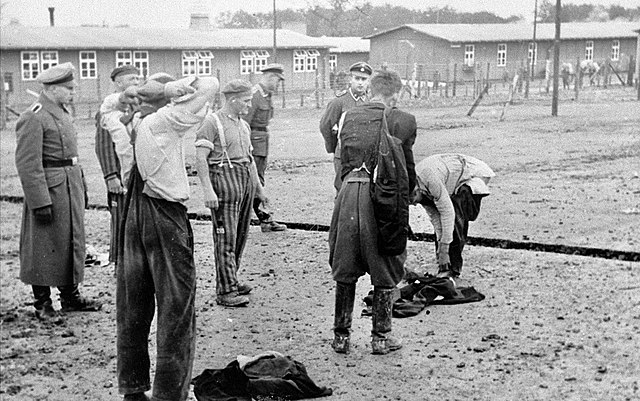The Buchenwald Resistance was a resistance group of prisoners at Buchenwald concentration camp. It involved Communists, Social Democrats, and people affiliated with other political parties, unaffiliated people, Christians, Jews, and Muslims. Because Buchenwald prisoners came from a number of countries, the Resistance was also international. Members tried to sabotage Nazi efforts where they could, worked to save the lives of child inmates, and in the last days of the camp, with many Nazis fleeing the approaching allied troops, tried to gain control of the camp itself. After liberation, the prisoners documented their experiences on paper and formed an international committee to look after the welfare of survivors.
Anti-nazi banner outside a barrack at Buchenwald. The sign, in rhyme, says "We anti-fascists want to go home to eradicate Nazi criminals".
Buchenwald during liberation. The sign says, "The German political prisoners welcome their American friends."
Memorial at Stralsunder Cemetery: "We swear to keep alive the memory of the victims of Nazi barbarism."
Local residents forced to confront corpses and other evidence at newly liberated Buchenwald
Buchenwald concentration camp
Buchenwald was a Nazi concentration camp established on Ettersberg hill near Weimar, Germany, in July 1937. It was one of the first and the largest of the concentration camps within Germany's 1937 borders. Many actual or suspected communists were among the first internees.
Image: Buchenwald Prisoners Undressing 80135
Image: Buchenwald Prisoners Roll Call 10105
Entrance gate of the Buchenwald concentration camp, inscribed Jedem das Seine ("To each his own")
Dutch Jews stand during a roll call after their prisoner transport from Buchenwald in May 1941 in camp Mauthausen on 26 June 1941.








